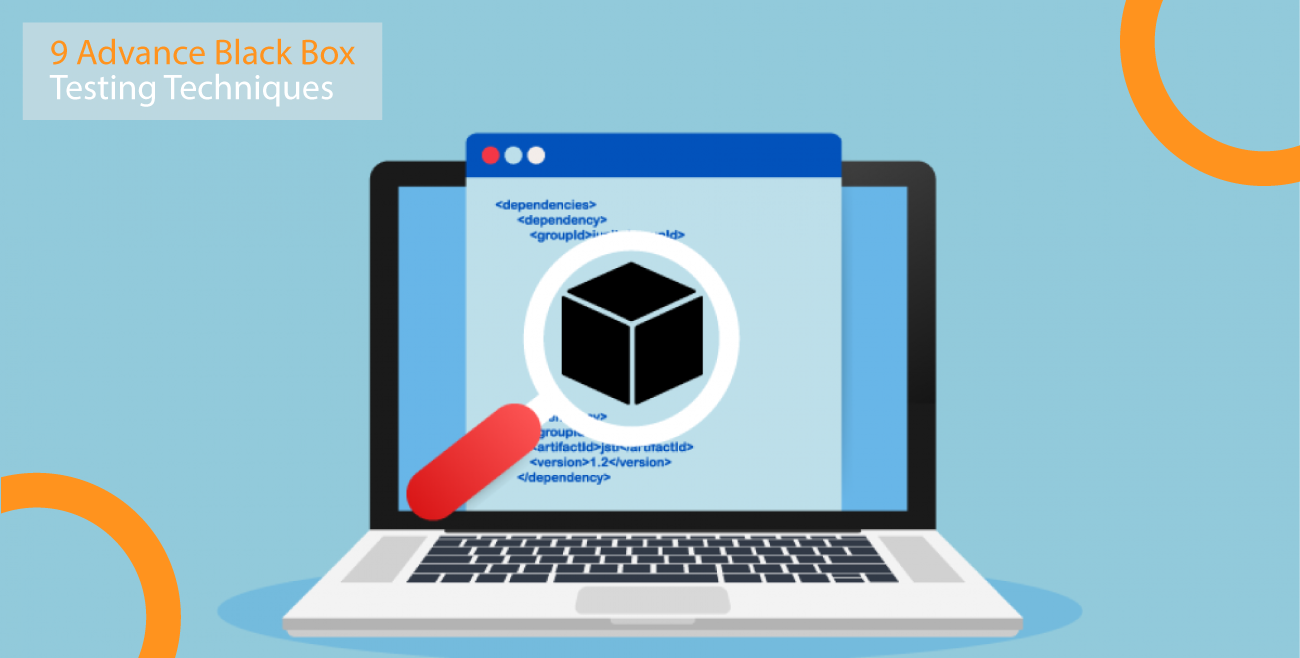Black box testing is used to test an application without knowing its internal structures or workings. In this type of testing, the tester should focus only on the input and output conditions. But to achieve better results from black-box testing, one must have some important knowledge about the internal structure of the tested system. If the tester is well aware of this knowledge, then black box testing can effectively test a system.The following are some advanced techniques used during black-box testing:
Equivalence Partitioning & Boundary Value Analysis
This is a black box test design technique that aims to identify the minimum number of test cases that will cover all boundary conditions, equivalence classes, subclasses etc., for an input domain.For this, the equivalence classes of input conditions are first identified. Then these classes are divided into more homogeneous equivalence partitions such that each partition represents a distinct testable region of the program.The purpose of this technique is to eliminate unnecessary or redundant tests while providing maximum testing coverage by executing tests on boundary values, which are likely to uncover errors.
Decision Table Testing
This black-box test design technique is used when several alternative paths exist in the program code, leading to the execution of different code blocks. In this method, a table with 2 columns, i.e. input conditions and corresponding output conditions, is created for each decision in the switch statement or several conditionals. This method is beneficial if there are many decisions in the program to be tested, as it reduces the number of test cases required, hence covering all possible input conditions. For testing boundary values also decision table testing can be used.
State Transition Testing
State transition testing is a black-box test design technique in which a state transition diagram is created for the program under test. Then using the information from the state transition diagram, test cases are designed to cover all possible transitions from an initial state to any specific end-states. If a node in the graph is -current state and outgoing edges of this node represent possible next states- then we can say that this node is a decision point. This kind of testing is useful in programs that require a high level of data security or access control mechanisms. This method can test login screens, password entry fields etc.
Use Case Testing
Use case diagramming as a UML modelling technique. The use cases are identified for a program module or system under test, then the functionalities of each use case are described in either text or diagrams. This method is beneficial for systems whose functionality can be broken down into smaller tasks. The most important advantage of this technique is that it helps understand and document how users interact with a system and thereby enables testers to design better test cases.
Error Guessing
Another black-box test design technique is error guessing, a “knowledge-based” testing approach in which the tester assumes what the program will do in a given situation and then verifies that assumption by running the program. If any unexpected result is received during this process, which was not expected by the tester, then it is assumed that the program has some error, and this condition will be reported as a bug. This method can be applied if there is no documentation available for designing test cases. Hence, this black-box testing technique is mostly used by beginners to start their testing careers.
Equivalence Partitioning
Equivalence partitioning is a black-box test design technique in which classes of input conditions are identified for a program. These equivalence partitions are created such that each partition contains sets of equivalent conditions that result in the same execution paths.
This technique aims to create small sets of test cases that can be used to cover all the different condition sets. This method is useful in testing functions with many arguments that cannot cover with a few test cases.
Boundary Value Analysis
Boundary value analysis is a black-box test design technique in which test cases are designed based on boundary conditions. Values lying at each equivalence partition’s minimum and maximum boundaries are tested.
This method is beneficial in cases where several equivalence partitions are very high because it reduces the number of tests that have to be designed and executed for a test case. This method can also be applied in testing programs with set limits on input variables.
State Transition Table Testing
State transition table testing is another black-box test design technique in which a state transition table is developed for the program under test. Then using this information, inputs are selected and executed to verify the correctness of each program behaviour, i.e., to cover all possible paths.This method follows a top-down approach because it starts testing from a higher level and continues until the lowest module is tested.
Fuzz testing
Fuzz testing or fuzzing is a technique that can be used as a black-box test design technique to improve the quality of software products. It is an automated technique that involves providing malformed/semi-malformed data to the program input points and collects any error messages caused by such inputs.This method aims to check how the system reacts to unexpected inputs that might cause a fault. The main advantage of this testing method is that it helps identify security loopholes and detects errors due to incorrect handling of exceptional conditions.
Add a title for one of the black or white boxt testing published blog
Conclusion
To conclude, black box testing is a very important aspect of software testing services. There are different black-box test design techniques available to choose from, based on the requirements and complexity of the system under test. These methods can be used by testers depending upon their experience level. Testing without any planned strategy is not advisable as it may miss many issues/defects.
Tools like selenium, Silk test and IBM Rational functional tester make black-box testing even easier by automating the process of creating scripts to test a system under different conditions.
So it is always better to use a combination of these methods during the software testing life cycle because each method has its advantages and disadvantages, which can be used to the best advantage of the tester. Though this planning phase for testing is not much documented or discussed among testers, it can significantly impact the result of software testing services.

















